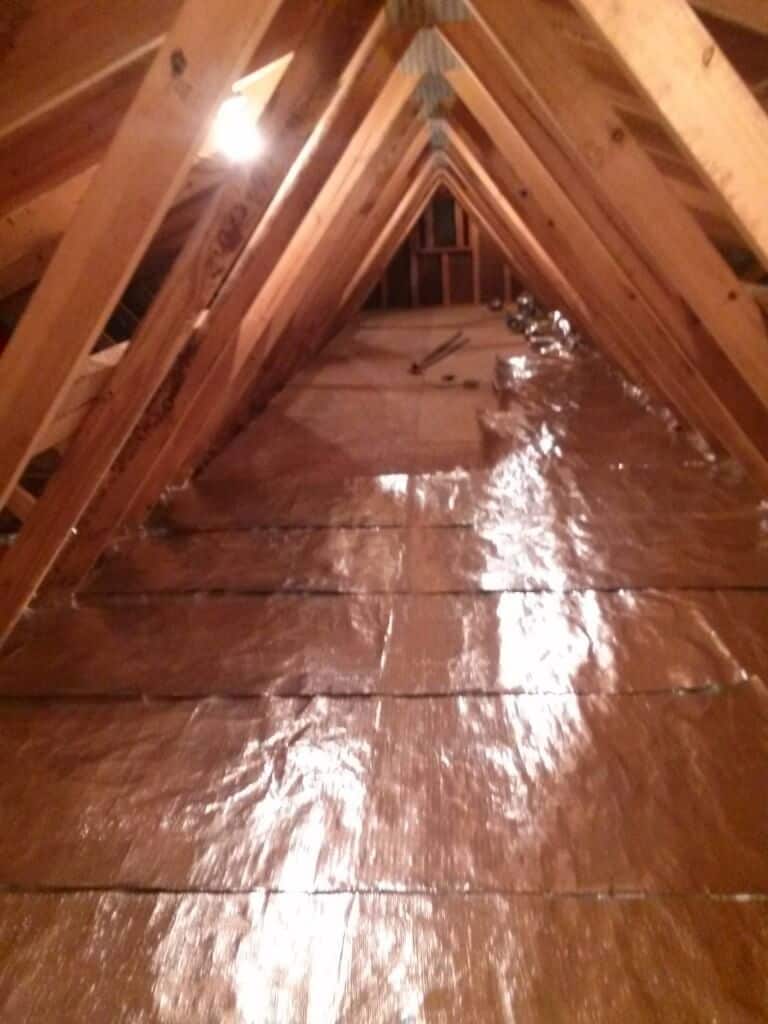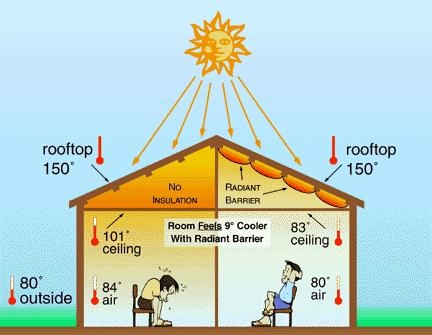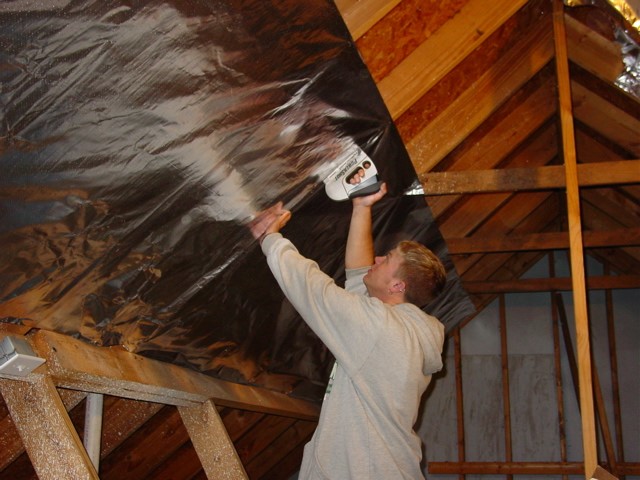

If you live in a hot climate, and have a home that was not built with radiant barrier sheathing, installing a radiant barrier in your attic will likely lead to noticeable energy savings. Consult with your state, local, or regional planning department about whether a radiant barrier is a good investment in your climate. This was in response to aggressive radiant barrier marketing efforts in that state.

Minnesota officials, for example, have advised against radiant barriers for state residents. Beware of scams, such as “paint-on” radiant barriers, or too-good-to-be-true statistics about the energy savings they can bring, especially in cooler climates. There is a lot of misinformation about radiant barriers out there. A perforated barrier has tiny holes that allow air and water vapor to pass through. It will condense on the radiant barrier and make the attic wet, damaging your home. If a non-perforated barrier is installed in your attic, the warm air and moisture from inside the house will rise and have nowhere to go. A radiant barrier that is non-perforated will not allow water vapor to pass through.

Third, you should know the difference between perforated and non-perforated radiant barriers. Accumulation of dust on the foil surface will lower reflectiveness, and this is one reason that the installation of a radiant barrier on the attic floor, rather than the ceiling, could be problematic. Second, a radiant barrier is only effective if it is reflective. If they’re sandwiched between two pieces of insulation or siding, they become conductors and will actively be working against your insulation. First, radiant barriers need an air space in front of them. There are a few things to keep in mind if you want to preserve the effectiveness of a radiant barrier.

Again, in this case, installing a radiant barrier is usually a simpler and less expensive project than installing insulation in your attic. Unfortunately, a lot of older homes have ductwork in unconditioned attics. Keeping your attic cool is extra important if you have air-conditioning ducts running through it. Buildings with metal roofs could benefit greatly from radiant barriers, since metal can get very hot under the sun. You may also want to consider installing a radiant barrier in barns or outbuildings that are poorly or not at all insulated. If you live in the northern hemisphere and your roof is south-facing, a radiant barrier will be more effective on that side. The primary job of a radiant barrier is to reduce heat gain from a hot roof, and a roof that gets more sun exposure will get hotter. If you have an older home with poorer insulation, a radiant barrier may be a cheaper option than replacing insulation. Insulation prevents conductive heat from entering your home by absorbing it, and that means there will be less heat for the radiant barrier to mitigate. The more insulated your attic, the less difference a radiant barrier will make. Here are some situations where a radiant barrier might benefit you most: Your attic is poorly insulated. The value of a radiant barrier in your home depends on your climate, sun exposure, and current insulation. Older homes can be retrofitted for extra energy savings by attaching radiant barrier material to the attic ceiling or floor. Radiant barrier sheathing, which is plywood or OSB board with foil adhered to one side, is often used in new homes, with the foil facing into the attic space. Department of Energy says that radiant barriers can reduce cooling costs by 5-10 percent in a warm, sunny climate. Radiant barriers have the most impact in reducing radiant heat gain during the summer. A radiant barrier will reflect this heat back toward the roof, keeping your house cooler in the summer. When infrared radiation from the sun hits a home’s roof, it heats up the roofing material, which then radiates that heat back out in all directions. A radiant barrier is a reflective surface that prevents radiant heat from entering a home’s heat envelope.


 0 kommentar(er)
0 kommentar(er)
